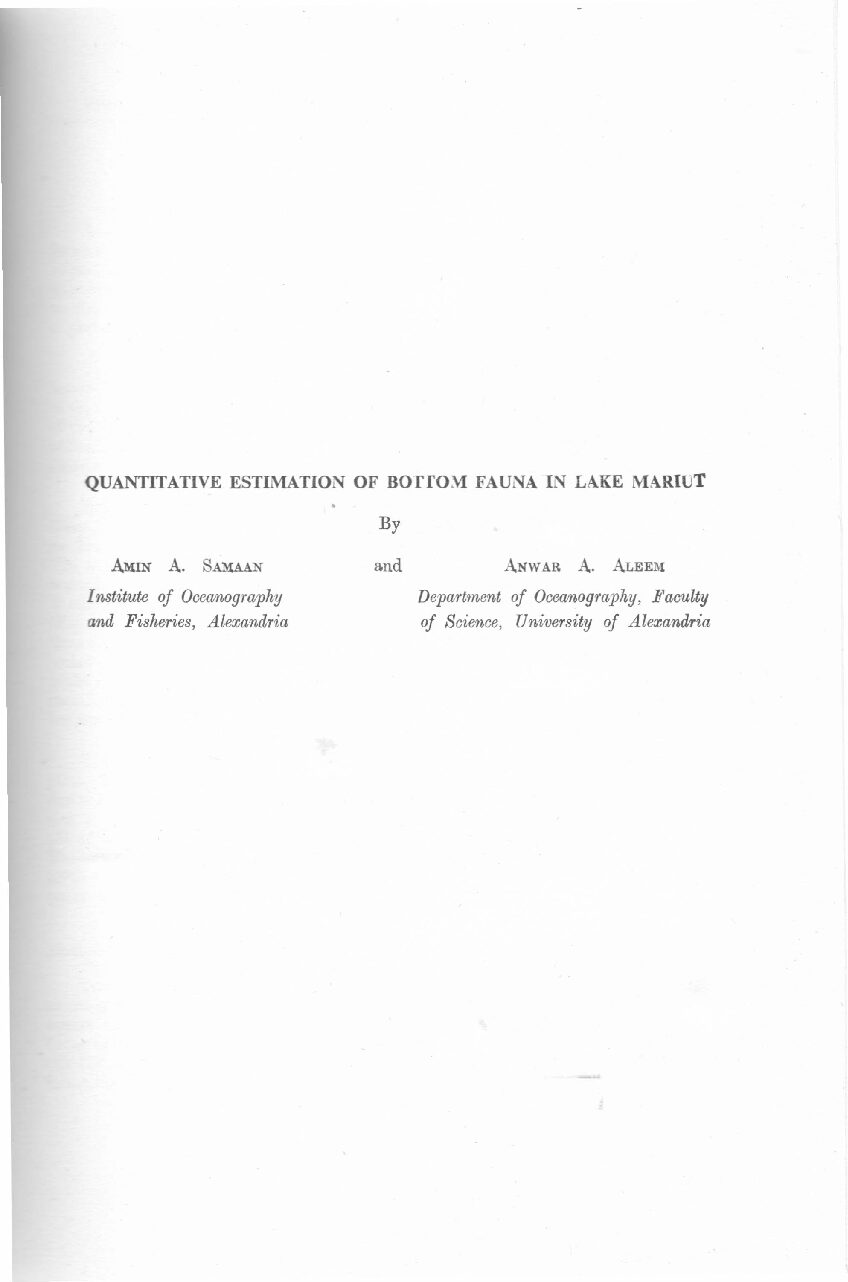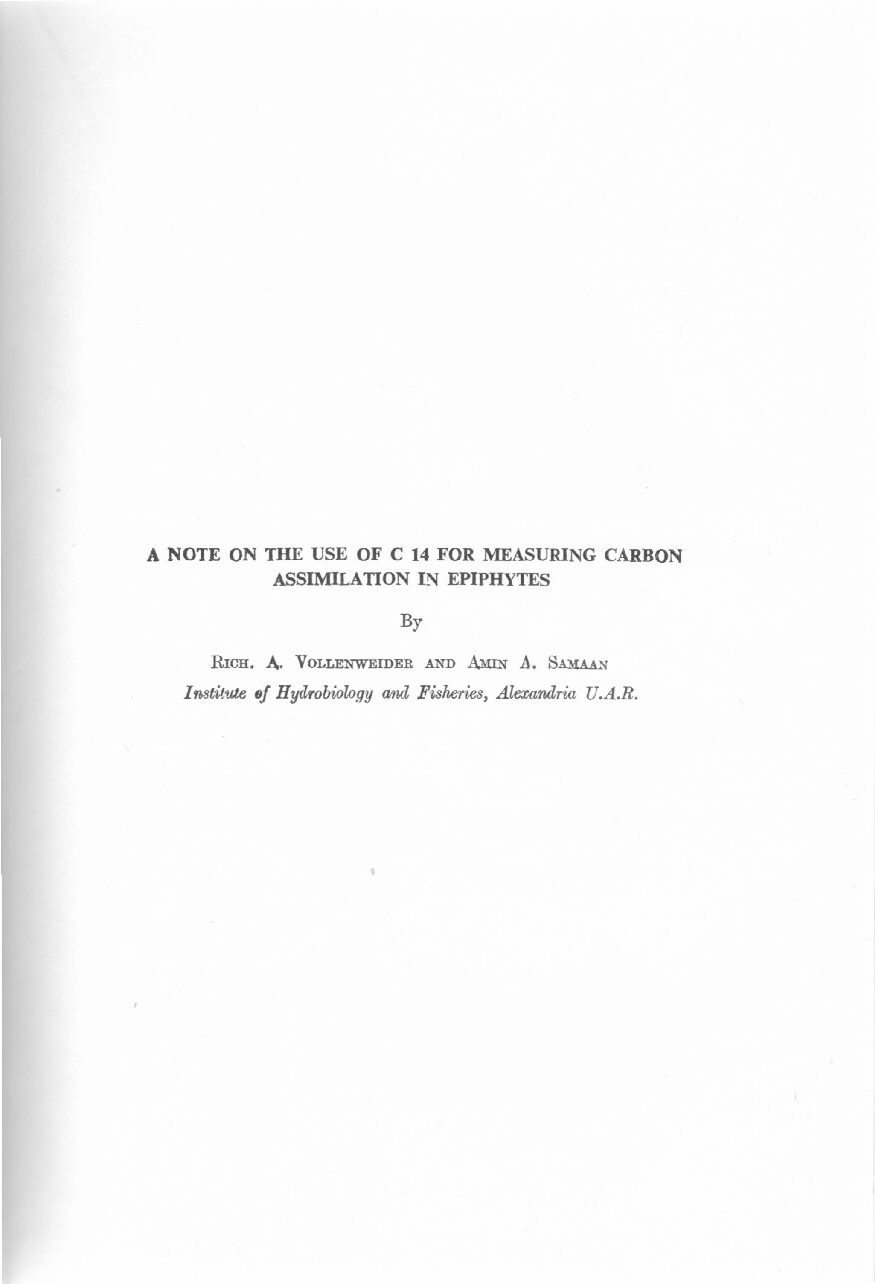Categories
vol-2QUANTITATIVE ESTIMATION OF BOTTOM FAUNA IN LAKE MARIUT
A.Mrn A.. SiltAAN
Institute of Oceanography
and Fisheries, Alexandria
By
a.nd ANW AR A.. ALEEl\1
Department of Oceanography, Faculty
of Science, University of Alexandria
INTRODUCTION
Little informations are gained up till now concerning the distribution of bottom
fauna in our Egyptian Delta Lakes. Such studies are however of prime importance
in assessing the biological productivity of these shallow brackish water lakes. The
only available work is that carried out by Elster et al (J 960) and by Ezzat (1955)
on the benthos of the Nouzha Hydrodrome (1200 feddans) which was previously
a part of Lake Mariut.
The present investigation was carried out with the view to study the relation
between the magnitude of the standing stock of bottom animals and the fertility
of the lake water. The other ecological conditions that may affect the distribution
of the different animals are also considered. The physical and chemical aspects
of Lake Mariutin addition to primary production were published in previous papers
(Aleem & Samaan, 1969 I & II).
Lake Mariut is a brackish shallow water basin adjoining the Mediterranean
Coast of Alexandria at latitude 310 10″ north and longitude 290 55″ East; with
no free exit to the sea. Its surface area amounts to 20,000 feddans (84 km2).
The average depth of water is about one meter. The lake receives irrigation
water from the cultivated land in the Beheira Province through the Umum Drain.
It receives also some sewage at the north margin by the side of karmous District
(Fig. 1). The lake is considered as a highly eutrophic lake which sustains a rich
flora of phytoplankton. The bottom of the lake is covered mainly with a badly
sorted complex type of sand-silt-clay, greyish to black grey in colour (El-Wakeel &
Wahby, 1970). Empty shells of Cardium edule, gastropods and empty calcarious
remains of the tube worm Mercierella enigmatica are distributed all over the lake
bottom.
The chlorosity of the lake water ranged between 2.5 and 5.6 gm Cl/1 during
1960. Lower values are usually recorded during the autumn and winter months
due to the introduction of flood water and it increases gradually during the spring
and summer as a result of excessive evaporation of the lake water. The
pH of the lake water ranges between 7.8 and 9.35 i.e. it is on the alkaline side.
The water temperature usually follows that of the air. Thus, lowest values (about
12°C) are recorded during December and January, while the highest (about 290C)
occur during August







